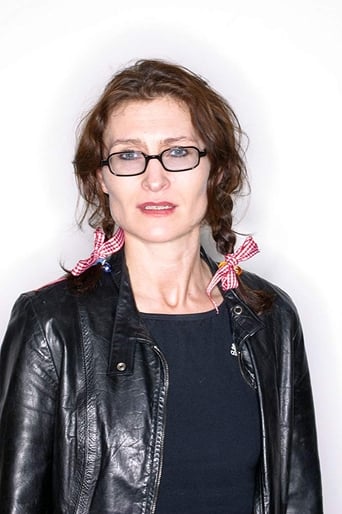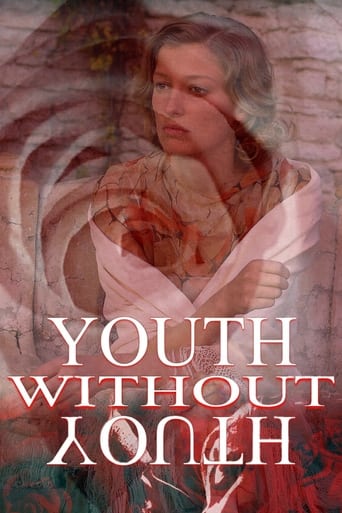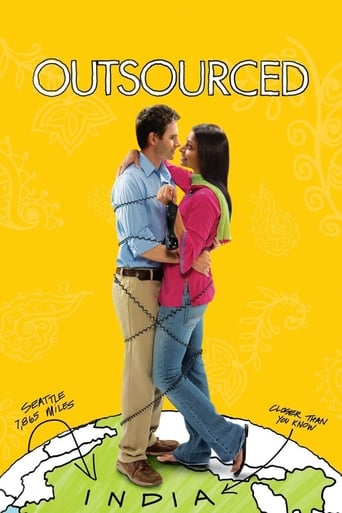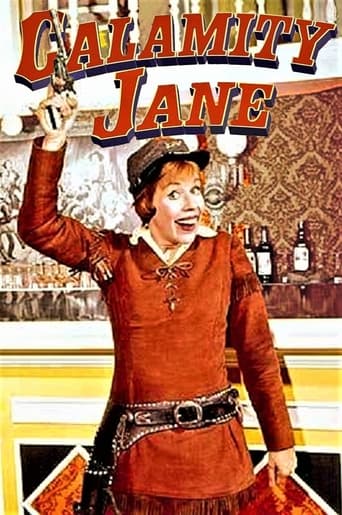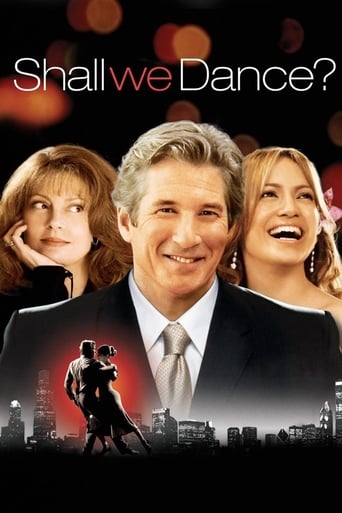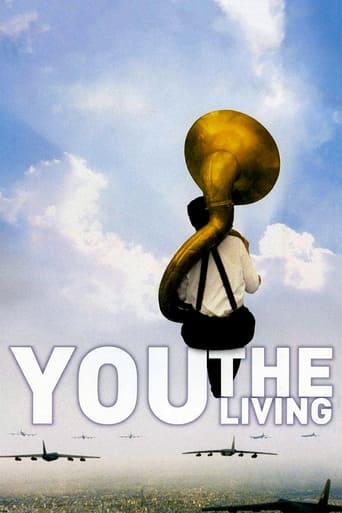
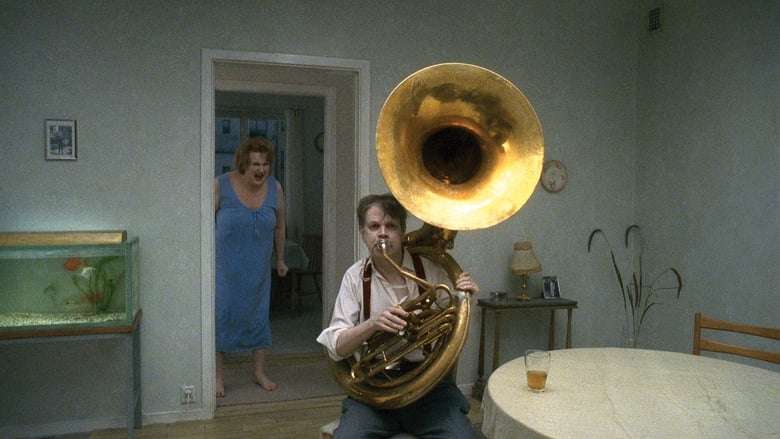
You, the Living (2009)
In the Swedish city of Lethe, people from different walks of life take part in a series of short, deadpan vignettes that rush past. Some are just seconds long, none longer than a couple of minutes. A young woman (Jessica Lundberg) remembers a fantasy honeymoon with a rock guitarist. A man awakes from a dream about bomber planes. A businessman boasts about success while being robbed by a pickpocket and so on. The absurdist collection is accompanied by Dixieland jazz and similar music.
Watch Trailer
Cast
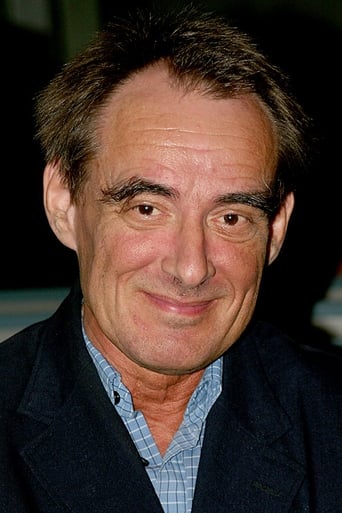
Similar titles
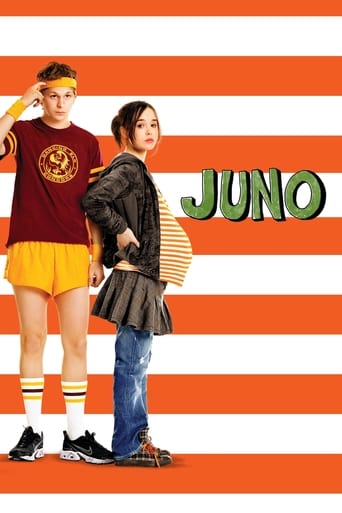

Reviews
the audience applauded
I like movies that are aware of what they are selling... without [any] greater aspirations than to make people laugh and that's it.
The story, direction, characters, and writing/dialogue is akin to taking a tranquilizer shot to the neck, but everything else was so well done.
One of the film's great tricks is that, for a time, you think it will go down a rabbit hole of unrealistic glorification.
Roy Andersson has become known for his deadpan, surrealist, and often-dark humor. You, the living is a great example of that. It deals with the lives of ordinary strange people with no real connections until you look closer and notice the details. For me, that is what makes this movie funny, sad, and artistically impressive. Andersson is known for tending to use unprofessional actors in his film, which add to both the realness of the reality he has created and the offsetting surrealist feel of the film. Thought You, the Living, Andersson has the actors monologue about their lives (often breaking the fourth wall) with whatever grievance or happiness is afflicting them. One woman (in a very famous scene) reflects on a dream she had in which she married her crush. Another woman cries as her class watches because her husband called her a name. The acting is atrocious, but the sets are absolutely incredible, so that there is a strange disconnect between the actors and their surroundings. At the same time, their slightly off looks, pale dead-like faces match the sad, dreary, sterile feeling of the environment they are placed. The humor in this film tends to be completely oblivious to the characters, which is a sad commentary on the reality we find ourselves in. A great example from the film is the very sweet looking man who is practicing his drums. He is alone in a very simple room listening to music while keeping beat with his drum, which has been muffed. Partway through the scene, the door shuts behind him in a seemingly angry way, while the man notices, does not seem bothered and continues to play. Another example is when a man is recalling a dream he had while slowly passing the camera in his car (he is stuck in traffic) The entire dream is emotionless for him until the very end when he has the realization that the electric chair is a terrible invention.Andersson uses steady, long shots to capture this humor. Because of this, he has created a style that is entirely his own with no imitators or followers. This is partly because the shots and construction of the set are so detailed that other directors cannot possibly think of doing it in this way because it is so time (and money) consuming. When the woman talks about marring the guitarist. Andersson built that large set on a functional rail so it could be moved around and leave at the end of the scene. While digitally altering the film may have been more feasible, knowing how much work went into that one scene is incredible and makes watching it again, that much more impressive. In this sense I can really see the artistry in this film, even if I did not particularly enjoy watching it, I can appreciate the effort, time, and thought that went into each scene.For all its humor and incredible artistry, the overall message of the film is rather sad and depressing. Andersson tears about the way we think we fit into this world with his mockery of our feeble attempts to be something special. He even troughs the title in our face with a bit of sarcasm and perhaps contempt, You, the Living. With the sad monotonous way we live our life and pointing out the humiliation of our existence. Though Andersson has been critiqued for his seemingly blaming stance of society, he says he does it with a sad heart, and that his films are not meant to anger, but are done with understanding and sadness.You, the Living is supposed to be the second in a trilogy of films, the first being Songs from the Second Floor. His next and third film for this series is anticipated to come out soon. What I find interesting, is with his great success of his first movie, A Swedish Love Story, he was depressed about being pegged for a certain type of style and refused to make a sequel. After years of work (not with feature films) he has finally been pegged down to a style, but it entirely his own and of his own making. In today's world, even with a relatively new industry like film, that originality and creativity is what I find most impressive; especially with his work in You, the Living.
Roy Andersson's film, "You, The Living" ("Du Levande in Swedish) covers the broad topic of humanity with vignettes of many different stories of people in Sweden. Andersson shows many sides of human nature, including loneliness, fantasizing about the future, getting stuck on dreams, and forgetting to appreciate what you have while dwelling on what you think is wrong in your life and your relationships. He gets his message across pretty clearly with the various examples of people from different places in age, society, and life in general.The lives of the different characters are not very connected as you see in other Nordic films with the same style, but they do typically meet at least once. The film does not have one plot or even a connection that ties all of the characters together other than short meetings and the connection of humanity. The style used to connect each vignette was similar to that of "Paris, Je T'aime", a French film with a similar concept of showing human nature through short vignettes. Although there is not much connection throughout the film, it still succeeds at generally holding the attention of the viewers and getting a message across. With each scene, we learn a little bit more about what Andersson wants the viewers to take away form the film- enjoy life to the fullest while you can. Each character and story displays an example of how humans tend to take life for granted, whether through daydreaming instead of actually living in the now or through literally taking what is good in life for granted. The characters in the film show how humans can miss out on good things because they are focused on the wrong things, such as money or dreams of the future. The one character that shows an attempt to make her fantasy come real is Anna. We are introduced to her with a full view of what she imagines could happen with the musician at the bar. The difference between her and the rest of the characters we see is that she actually acts on her desires and does not lose sight of the present opportunity due to other distractions.What makes this film unique in the genre of films with many vignettes to get across a single message is Andersson's style. The lighting is natural, but the characters all seem very pale and mundane, like life without the right desires and intentions. On top of having very pale, almost lifeless skin, the characters dress in boring colors such as grey and khaki. The only one who really stands out is Anna and her bright pink boots. It is impossible not to notice Anna's boots right away in Andersson's fictional lifeless world. Her boots are a great example of Andersson's common use of symbolism. Her boots represent her odd ability to go after what she dreams of, unlike the other characters in the film. Furthermore, the music played in the film is used very strategically to enhance many of the actions of the characters. Each song shows some of the quirky characteristics of each character while also emphasizing their own view of the world, whether that be bleak or optimistic. For instance, the song in the opening scene with the woman singing about no one understanding her has a quirky melody, yet demonstrates her focus on the wrong parts of life. Contrastingly, the music played by Anna's new husband at the end of her dream shows a brighter, more beautiful world. The sun comes out and the people gather all because of Anna's willingness to act on her desires and take a risk. The use of color and music in the film to represent life without truly living show Andersson's vision of some of the flaws in humanity. Andersson successfully takes a common theme seen in films and makes it his own with his unique filming style.Andersson's film is a serious take on the flaws of human nature and how to get what will truly make you happy in life while still having some comedic relief. With Andersson's odd sense of humor, you will find yourself laughing at times that you feel you should not be laughing. This comedic aspect of the film makes it much easier to take in the message that Andersson is attempting to get across and, ironically, take him much more seriously. Without the comedy, the film would be very bleak and pessimistic. However, this film is actually easy to take in most of the time and sends a very strong yet honest message. Andersson does a great job of creating a film with an important lesson that is also entertaining to the viewers, which not many directors do successfully.
"You the Living" is quite unlike other movies. It is more like a series of quasi-comic sketches, or perhaps even a series of photographs of animated paintings. It opens with a man sleeping, for what seems an eternity. You must relax into the slow pace, that proceeds much the way real life does with long periods of the same thing happening, with what's interesting confined to a tiny dot of the screen, like watching a plane wreck from great distance. It is set in a very bleak, rainy, cold foggy Norway where interiors are painted shades of hospital green, and lit with cold fluorescent light. The actors are nearly all overweight or over 65. Only a tiny handful of the enormous cast could be considered photogenic. Nearly everyone is unreasonably grumpy and seriously depressed. The theme is selfishness results in ordinary cruelties. People create their own misery with their self-absorption. You have to stand back and see the humour or you too could be smothered in the gloom.
It is not often that a film combines dream and reality or tragedy and comedy the way that Roy Anderson's film Du Levande, You, the Living, does (Sweden, 2007). The simple title of this film simultaneously calls out to viewers and states the film's subject, "You, the Living." This film is a portrayal of the living, of the dirty, gritty, comically painful parts of life that the living experience. The film is composed of fifty vignettes portraying different aspects of life for different characters all set to the soundtrack of Dixieland jazz music partly adapted from music by ABBA's Benny Andersson. The film has many characters but the starring roles go to Elisabet Helander, Björn Englund, and Jessika Lundberg.To give even a very brief plot summary of this film is a nearly impossible task. To fully understand the plot of this film, explanations of each vignette are necessary. The film has many story lines that rarely intersect, and these intersections are insignificant at best. There is little character development, and only one character's name is mentioned enough to commit to memory. Essentially, each vignette is a portrayal of an ordinary life occurrence that is a little bit quirkier than normal in an attempt to elicit amusement from the audience. To summarize some of the stories, there is a couple whose fights cause them to get into trouble at their work, a groupie hopelessly in love with a guitarists and dreams of their marriage, a self absorbed woman who feels as if nobody understands her and is frustrated when she receives attention from the wrong man, a carpenter who daydreams that he is put to death for breaking china, and the leader of the film's music, a man who plays the sousaphone at funerals. Clearly, the stories do not make for a coherent synopsis.This film is billed as a comedy and in some senses, I would agree with this. However, for me, it was the kind of amusement that I get from hearing about humorous daily trials from my friends and not the kind of comedy that I usually enjoy, comedy that is seated deeply in relationships between developed characters and circumstances beyond the ordinary. And while many of the circumstances seemed beyond the ordinary, such as the man who dreamt that he was given the electric chair for breaking a two hundred year old china set, the ordinary, lighthearted humor seeps its way into every scene, manifested in this specific scene as the electric chair operator reading the manual to figure out how the chair works. The circumstances vary in their commonality, but the thread of humor based in reality is is woven through each vignette.With depicting various life situations that are somewhat standard for the people involved, the out of place Dixieland music in the background made the film interesting, and tied the scenes together. From the first scene to the last, this lighthearted and carefree music colored the mundane backdrop of this film. Another interesting technique that added depth to the film was the choice of filter, which had an unrealistic and dreamlike quality to it, making a shot of an apartment seem more tenuous, more ethereal, less ordinary.Personally, the humor of this film is not something I particularly enjoy but I did appreciate it for many reasons. Like I said before, this film has the incredible ability to combine the difficult messy details of reality with dreamy hopes and fears creating a film that is both amusing and saddening. Something I enjoyed about the film was that I could relate to it. I, along with all "the living," can connect with the funny mundane moments in the film where one can only respond with the phrase "such is life" and the frustrating and troubling places we can get stuck in as a result of these circumstances. The duality of the film, the fine line between reality and dream that this film dances on, is what garners it so much critical acclaim. While I may not appreciate its content, I know this film is artistically skilled and can understand how it has won awards in both the United States and the Nordic Countries, among other places.The director of this film has said that it took three years to get all of the shots together the way he envisioned them. I think that fact speaks to the film as a whole. The complexity that was creating these sets of "ordinary" life mirrors the complexity that is "ordinary" life, in line with what I see as the film's purpose: to depict the difficult intricacy of life, in all its humorous glory.
